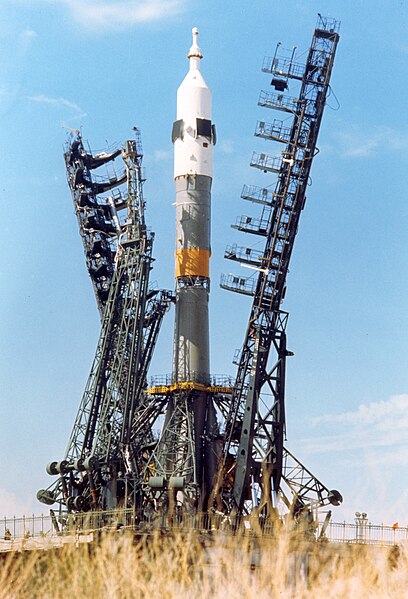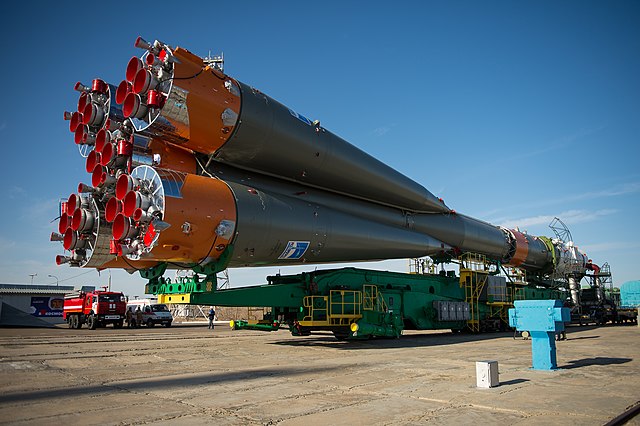The Soyuz-U launch vehicle was an improved version of the original Soyuz rocket. Soyuz-U was part of the R-7 family of rockets based on the R-7 Semyorka missile. Members of this rocket family were designed by the TsSKB design bureau and constructed at the Progress factory in Samara, Russia. The first Soyuz-U flight took place on 18 May 1973, carrying as its payload Kosmos 559, a Zenit military surveillance satellite. The final flight of a Soyuz-U rocket took place on 22 February 2017, carrying Progress MS-05 to the International Space Station.
A Soyuz-U on the launchpad for the Soyuz 18 mission
The Soyuz was a Soviet expendable carrier rocket designed in the 1960s by OKB-1 and manufactured by State Aviation Plant No. 1 in Kuybyshev, Soviet Union. It was commissioned to launch Soyuz spacecraft as part of the Soviet human spaceflight program, first with 8 uncrewed test flights, followed by the first 19 crewed launches. The original Soyuz also propelled four test flights of the improved Soyuz 7K-T capsule between 1972 and 1974. In total it flew 30 successful missions over 10 years and suffered two failures.
A later variant of the Soyuz rocket being rolled out to the launch pad at the Baikonur Cosmodrome in Kazakhstan.


